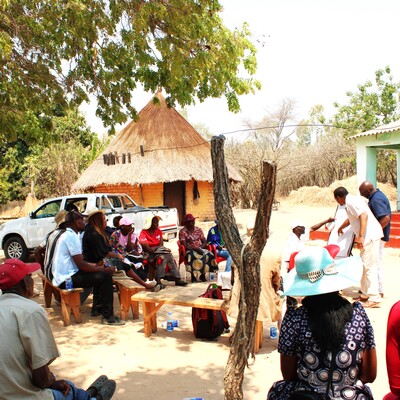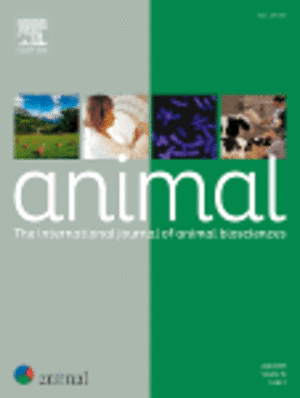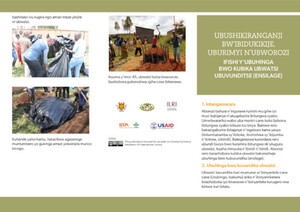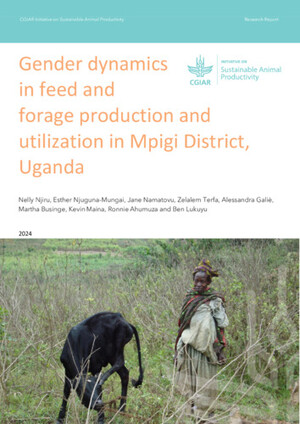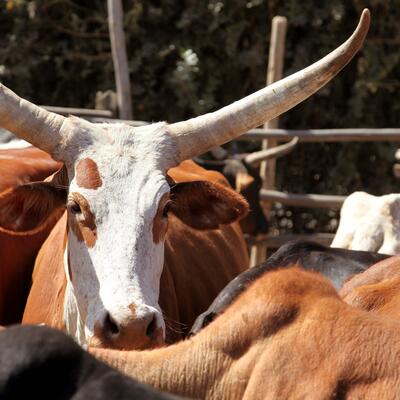
Ethiopian lab scientists meet to compare notes on use of Near Infrared Reflectance Spectroscopy (NIRS) to estimate livestock feed quality
Low livestock productivity mainly related to poor nutrition is a common problem in sub-Saharan Africa. Matching the available feed resources with the requirements of animals could increase productivity, reduce the environmental impacts, and reduce feed costs. Routine feed evaluation has proved very useful for feed characterization and safety, for formulating balanced rations supporting improved productivity and minimizing the environmental impact of livestock.
In support of this, Near Infrared Reflectance Spectroscopy (NIRS) is a useful tool used to estimate feed quality rapidly and at relatively low cost. NIRS can be used to characterize locally available forages and other feeds, enabling the formulation of optimally balanced and safe rations, facilitating establishment of nutritive value-based pricing, and improving feed marketing and environmental stewardship. It is also a promising technology for crop improvement programs because it can be used to screen large numbers of samples in a short time.
Establishing a NIRS community of practice to enhance cross-lab collaboration
As an initiative of the EQUIP project in Ethiopia, a NIRS community of practice (CoP) was established in 2019. Though COVID-19 has hampered its activities, a meeting of the Ethiopian CoP was held at the International Livestock Research Institute (ILRI) campus in Addis Ababa, Ethiopia, in late March 2022. The meeting allowed members to collectively discuss the enhanced performance of NIRS instruments already in use in Ethiopia, the challenges encountered by the members and to agree on approaches to standardize operating procedures on the use of NIRS instruments.
The CoP members from ILRI, the Ethiopian Agriculture Agency (EAA), the Ethiopian Institute of Agricultural Research (EIAR) headquarters and Holetta Animal Nutrition, and from BLESS Laboratories made presentations highlighting the status of their NIRS capability as well as some of their challenges with NIRS use. Cross-cutting challenges highlighted were hardware and software training requirements for staff handling the instruments, standardizing FOSS NIRS instruments, raising the awareness of the instruments and opportunities to collaborate amongst plant breeders and a need for implementing a standard operating procedure (SOP) for sample preparation and analysis among participating labs. The partners additionally discussed the importance of having frequent dialogues on calibration equations to ensure accuracy of NIRS analysis results. They agreed that further regular meetings would prove useful for efficient utilization of the tools and exchange of information.
Training and final discussions
After the presentations, KVSV Prasad, from ILRI’s India office, took the participants through a training on the use and application of NIRS instruments and the status of validating mobile NIRS. The participants were informed that validation of the equipment would continue.
During the general discussion the need for standardizing NIRS instruments across all the CoP members was highly recommended. The participants also set a few action points such as developing standardized operating procedures based on the protocols used by ILRI and the Food and Agriculture Organization of the United Nations (FAO). They additionally agreed on the importance of the use of correct and standardized equations across the CoP members. The CoP members also discussed the significance of quality management systems in the laboratories where NIRS instruments are operated.
The participants agreed that conducting ‘ring tests’ to verify the quality of laboratory methods and implementing a SOP would be desirable moving forward.
The meeting concluded with the participants committing to more frequent virtual meetings, every three months, to enhance coherence within the group. Participants also discussed the need to update calibration equations listed on the ILRI microsite and the need for demand-based training to enhance correct use of instruments. Participants agreed that Mesfin Dejene of EIAR would act as convenor of the CoP with ILRI providing the secretariat and facilitating meetings.
‘Let us share the best practices and turn conversations into collaborations,’ Bayissa Hatew, from ILRI remarked about the meeting.
EQUIP is funded by the Bill & Melinda Gates Foundation (BMGF) and led by Feed the Future Innovation Lab for Livestock Systems at University of Florida, USA.








